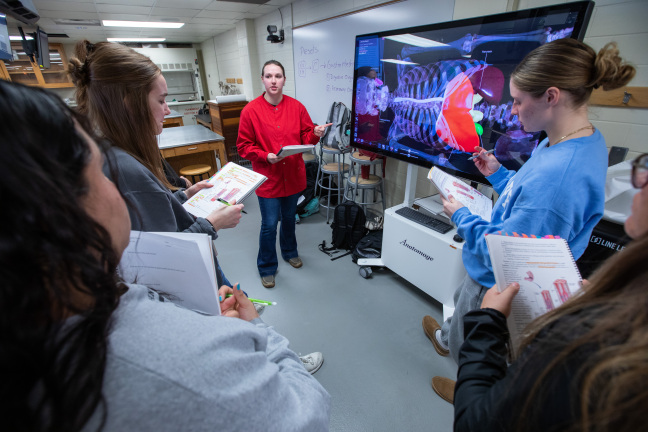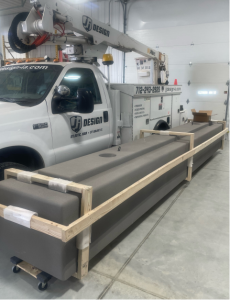(Radio Iowa) – Animal science students at Iowa State University are now able to do virtual 3-D dissections of animals on large touch screens and tablets to learn about anatomy. ISU Professor Karl Kerns says about 180 students taking Domestic Animal Physiology are using the virtual dissection table to supplement their hands-on learning.
“This is a new technology that we have for the anatomy physiology lab,” Kerns says. “We’re the first in the nation and only in the nation right now, as far as we know, of animal science curriculums and pre-veterinary programs to incorporate this into the classroom.”
Graduate student Alexandra Else-Keller, one of the course’s head teaching assistants, says this high-tech tool is “super-helpful.”
“We want to give students of different learning styles multiple ways to learn, because not everyone learns the same way,” Else-Keller says. “This gives a good 3-D picture of what those organs that we’re looking at and how they are organized in a specimen.”
Kerns says including an interactive digital component in the anatomy lab curriculum is a point of pride for the department.
“The experiential learning that this lab provides is really phenomenal,” Kerns says. “Getting to listen to something in a lecture gives you some level of detail, but then actually getting to see it in action, and put your hands on it, and navigate it, it really puts concepts into action.”

Grad student Alexandra Else-Keller leading the Domestic Animal Physiology class (ISU photo)
Graduate student Kourtney Jimmerson says a virtual dissection table is a relatively common teaching tool in medical and nursing schools, but it’s a rare opportunity for animal science students.
“Using this in animal science classes, it’s a new way to introduce the different models into the animal science world,” Jimmerson says. “There’s not many that have this for animal science. We see a lot of it in the human anatomy world.”
Virtual dissection has been used in the course for two years. Kerns says it doesn’t replace other methods of studying animal physiology, but the benefit is getting a fuller perspective on where organs are in a body and how they work.










